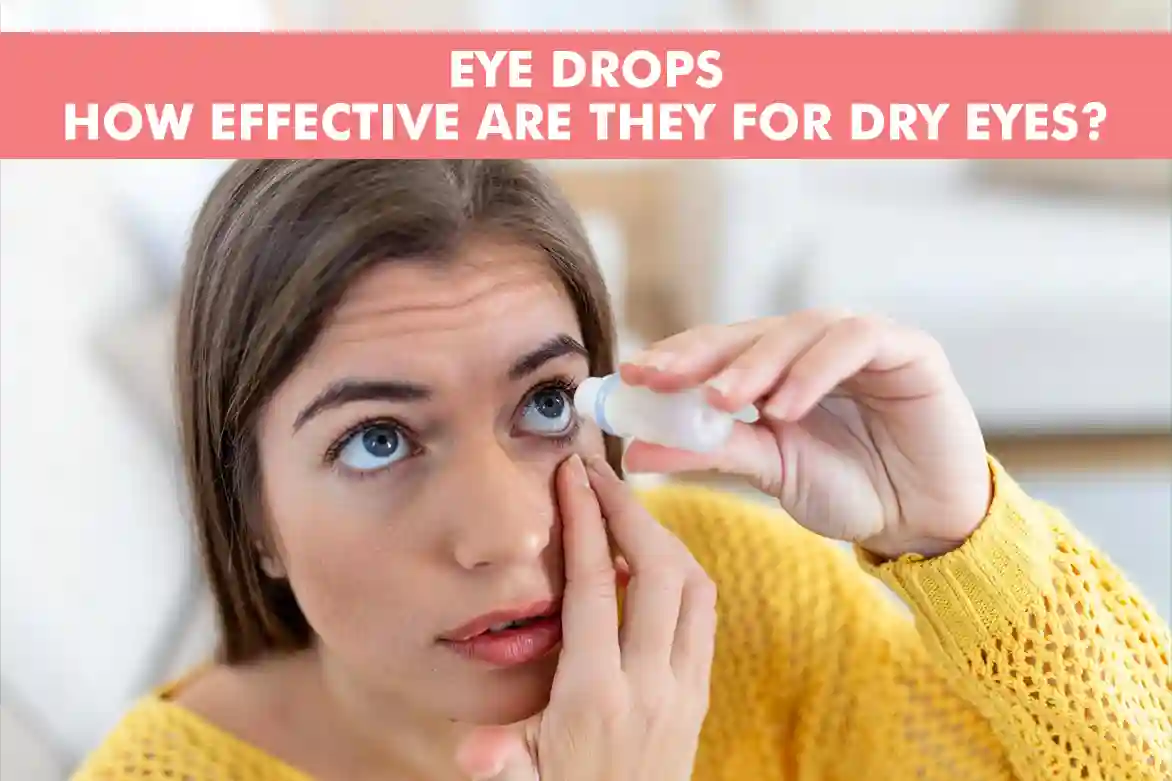Dry eyes are a common issue in today’s world, often resulting from prolonged screen time, environmental factors, or age-related changes. Eye drops are the primary solution for combating this discomfort. They provide lubrication, soothe irritation, and play a crucial role in managing the symptoms of dry eye syndrome. In this blog, we explore the uses of eye drops, their importance in treating dry eyes, and their effectiveness in providing relief. Let’s first understand what eye drops are.
Also Read: How to Prevent Dry Eyes After LASIK?
What Are Eye Drops?
Eye drops are liquid solutions formulated for various eye conditions, including dryness, irritation, redness, and infections. They range from over-the-counter lubricating drops to prescription formulations for more severe conditions. Eye drops for dryness are specifically formulated to mimic natural tears and restore moisture to the ocular surface.
Importance of Eye Drops for Dry Eyes
The importance of eye drops lies in their ability to provide immediate and targeted relief for dry eyes. When the eyes lack sufficient tears, or the quality of tears is poor, symptoms such as irritation, burning, and blurred vision can occur. In this case, here’s how eye drops can help:
Restoring Moisture: Lubricating eye drops hydrate the eyes, mimicking the natural tear film to reduce dryness.
Soothing Irritation: Eye drops for eye irritation work by calming the inflammation caused by dryness or environmental irritants.
Preventing Damage: Regular use of eye drops can prevent damage to the cornea and reduce the risk of complications like corneal ulcers.
Types of Eye Drops for Dry Eyes
Not all eye drops are the same. Understanding the different types can help you choose the right product for your needs:
Artificial Tears
These are the most common eye drops for dry eyes, available over the counter. They provide quick hydration and relief but may require frequent application.
Preservative-Free Drops
Ideal for individuals with sensitive eyes, these drops do not contain preservatives that might irritate the eyes with prolonged use.
Gel Drops
Thicker than regular eye drops, gel drops offer long-lasting moisture, making them suitable for severe dryness or nighttime use.
Prescription Drops
These are formulated to treat the underlying causes of dry eyes, such as inflammation or insufficient tear production. Examples include cyclosporine-based drops.
How Effective Are Eye Drops for Dry Eyes?
Eye drops are highly effective for managing the symptoms of dry eyes. However, their effectiveness depends on the severity of dryness and the type of drop used. While your eye doctor is the best person to recommend, here are a few things to remember.
For Mild Dry Eyes: Over-the-counter artificial tears are sufficient to relieve occasional dryness caused by environmental factors like wind, pollution or air conditioning.
For Chronic Dry Eyes: Prescription-strength eye drops or preservative-free formulations are more effective for individuals with chronic symptoms. These drops not only hydrate but also address inflammation and stimulate tear production.
For Post-Surgical Dry Eyes: Individuals who experience dryness after LASIK or cataract surgery benefit from specialised eye drops designed to promote healing and maintain hydration.
While eye drops for dryness are effective, they are often part of a broader treatment plan for severe cases, including lifestyle changes or advanced therapies.
Proper Use of Eye Drops for Maximum Benefit
Using eye drops correctly ensures their effectiveness and prevents wastage. Here’s a step-by-step guide to applying eye drops:
- Wash Your Hands: Always start with clean hands to prevent introducing bacteria into the eyes.
- Position Yourself Comfortably: Tilt your head back slightly or lie down.
- Pull Down Your Lower Eyelid: Gently create a pocket to hold the drop.
- Instil the Drop: Hold the bottle close, but avoid touching your eye. Squeeze one drop into the pocket.
- Close Your Eye Gently: Avoid excessive blinking, which can push the drop out before it absorbs.
Using the correct technique enhances the benefits of eye drops and reduces the risk of infection or irritation.
Conclusion
Eye drops are an indispensable solution for managing dry eyes. Whether using over-the-counter artificial tears or prescription-strength drops, their proper use is crucial for effectiveness. You can maintain healthy vision by understanding the uses of eye drops and selecting the right type.
Ready to explore your options for healthy vision?
Book your Appointment with experts from Planet Lasik.
Frequently Asked Questions (FAQs)
Yes, you can use most over-the-counter lubricating eye drops daily to relieve dryness. However, consult a doctor if you rely on them frequently or need prescription drops.
The best treatment depends on your condition’s severity. For mild cases, artificial tears are adequate. However, chronic dry eyes may require prescription drops, punctal plugs, or advanced therapies.
Yes, using eye drops for dry eyes is highly beneficial. They hydrate, soothe irritation, and protect the eyes from further damage, improving comfort and vision clarity.
Tilt your head back, pull down your lower eyelid to create a pocket, and squeeze one drop in. Close your eye gently to spread the drop evenly without blinking excessively.
No, you should close your eyes gently instead of blinking. Blinking can cause the drop to drain out before it has a chance to absorb.

